How to Master the Maratona dles Dolomites: A Guide to Preparation, Training, and Performing
Imagine this: it’s a beautiful morning in July, the sun is rising over the surrounding jagged limestone peaks, the cool mountain air is filling your lungs, media helicopters are hovering overhead for race coverage, and you’re surrounded by 9000 cyclists...
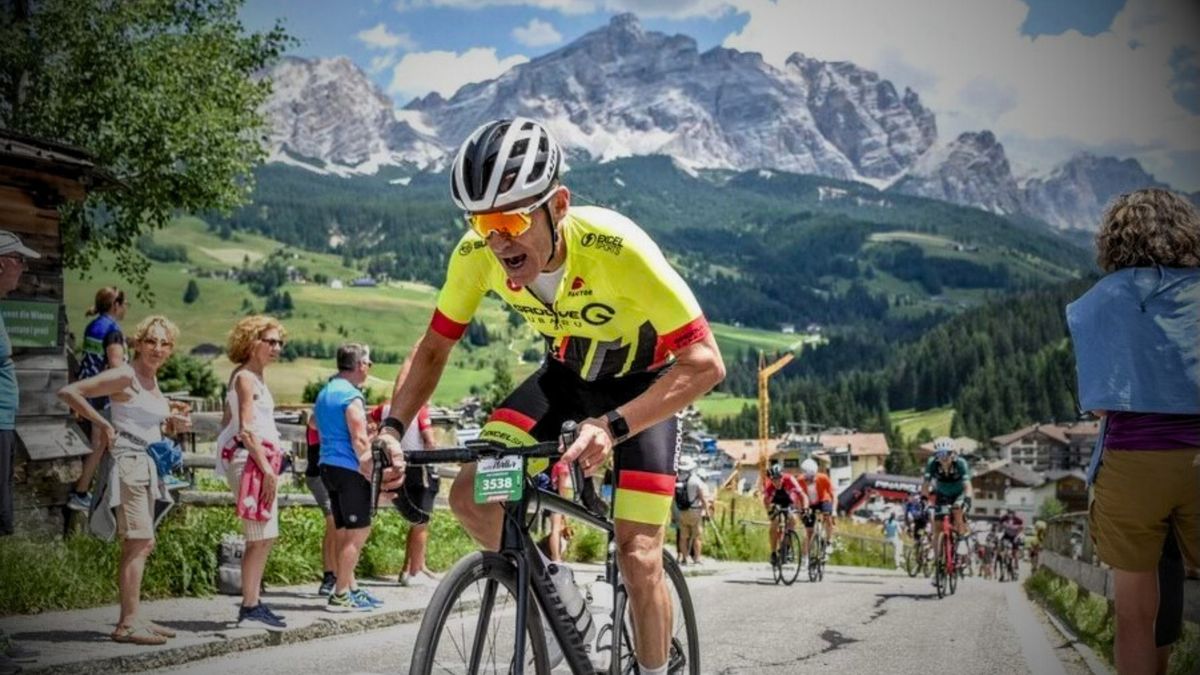
Imagine this: it’s a beautiful morning in July, the sun is rising over the surrounding jagged limestone peaks, the cool mountain air is filling your lungs, media helicopters are hovering overhead for race coverage, and you’re surrounded by 9000 cyclists ready in anticipation of conquering one of the most iconic granfondos in the world—the Maratona dles Dolomites. Standing at the start line, you can’t help but think of the Italian cycling icons of the past who have written history on these famous roads in the Giro d’Italia; Coppi, Bartali, Pantani, and Nibali - legendary! Whether you're a seasoned cyclist or a first-time participant, this epic race in Italy’s Dolomites is an unforgettable challenge. With it being such an iconic event, take it from me who has ridden the Maratona multiple times, you definitely want to come prepared for the challenge to make it an incredible experience.
What to Expect
The Maratona dles Dolomites is not just a race; it’s a celebration of cycling and the stunning Dolomites. Here are some key stats to whet your appetite:
- Distance: Three route options—55 km (short), 106 km (medium), and 138 km (long).
- Elevation: Brace yourself for up to 4,230 meters (14,000 ft) of climbing on the long route.
- Scenery: Think beautiful green valleys, towering peaks, and picturesque alpine villages.
- Atmosphere: Electric, with 9,000 cyclists from over 70 countries.
But make no mistake: this is no Sunday stroll. It’s a test of endurance, grit, and your love for climbing. Think hairpin turns, steep gradients, and the sheer joy of flying downhill.
Logistics: Planning Your Adventure
As a cycling coach who has ridden both the mediofondo and granfondo distances, I have unique insight into the preparation needed to execute on race day. Going to the Maratona with a CyclingHero guided tour will take care of many of the logistical details and allow you to focus on enjoying the event. There are still some details that you will have to plan out so your ride goes as expected:
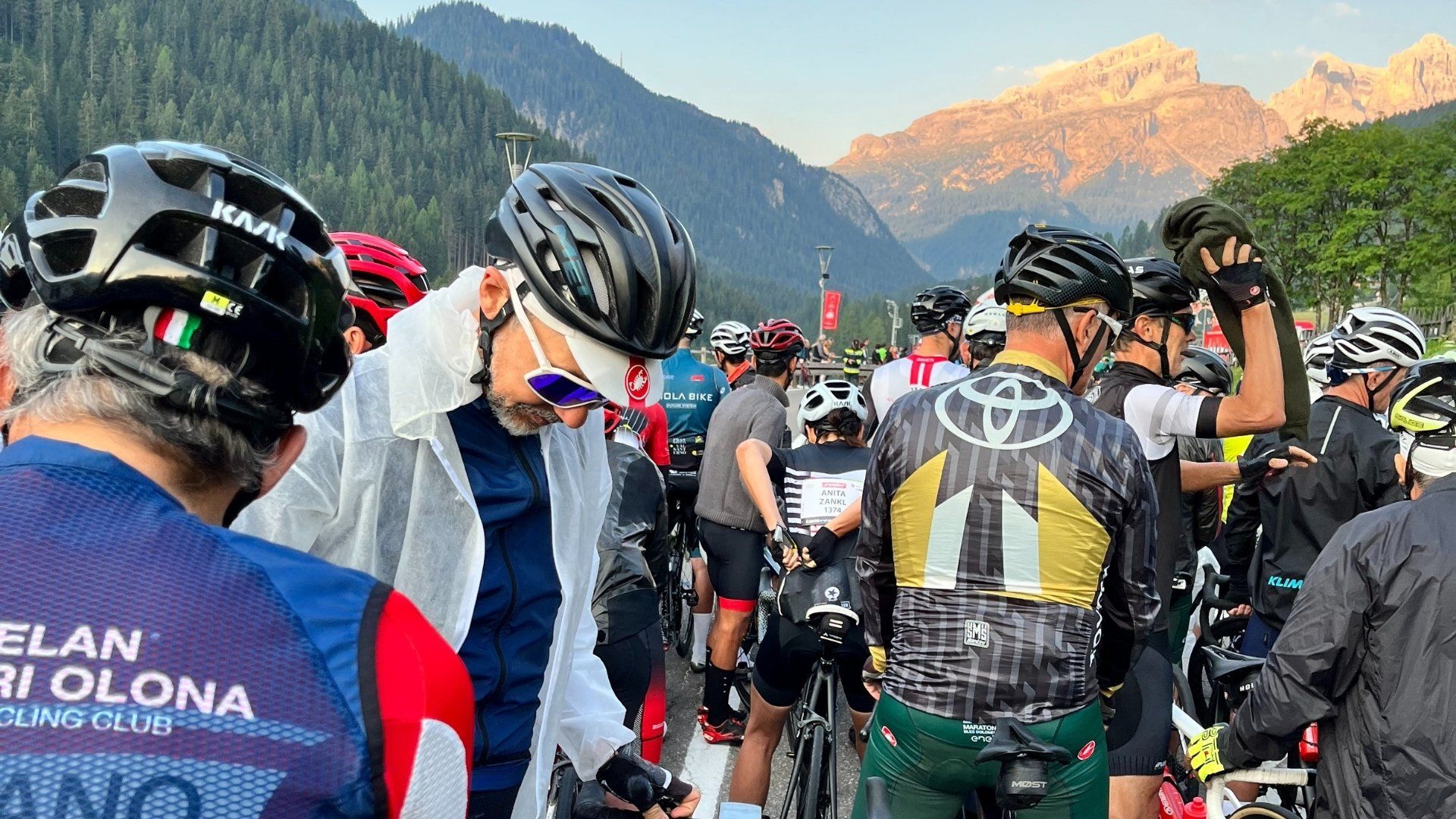
Registration, accommodations, and transfers to/from the airport:
These are three of the biggest logistical issues and are taken care of by CyclingHero. Having the experts handle these things will reduce your pre-race anxiety levels considerably!
Your bike:
Bring a lightweight road bike with gearing appropriate for climbing. 34x34 is not unreasonable. Trust me, your legs will thank you on the 15% gradients. Don’t forget to tune your bike ahead of time so you don’t encounter any mechanical issues. If for some reason you need something adjusted, the Maratona has a free mechanics station with top-notch certified mechanics available in the town of Corvara in the days leading up to the race. Have your bike ready to go with your race number attached and any minor adjustments done the day before so you're set to go early on race day.
Clothing:
You need to prepare for any type of weather - sun, rain, etc. Although most years the weather is great, mountain weather in the summer can be unpredictable so make sure you bring arm warmers, a wind vest, lightweight full-finger gloves, a base layer, and any specific rain gear such as waterproof shoe covers, and a lightweight rain jacket. It’s always better to be prepared with too much than show up without the right gear.
Another tip that I learned when I did my first Maratona was that many riders bring a disposable painter's one-piece jumpsuit to wear over their cycling kit to stay warm as they wait at the start line. They then quickly discard them in the trash right before the start. I’ve also raced some big granfondos in the USA, and the Italian riders who come over for those races also wear painter's suits in the staging areas. It’s well worth it to stay warm when the waiting time can be up to an hour or more before the start. If a painter's suit doesn't sound like your bag, the CyclingHero team is waiting for you roadside as you start up the first climb, the Campolongo, to collect any pieces of clothing you are ready to shed.
Pick up Race Packet:
Make sure you visit the expo and take in the full experience when you go pick up your race pack, and thank the sponsor vendors for contributing to this amazing event. There are many vendors there, and it’s a fun, lively place to visit when you pick up your race packet.
Race Day Logistics:
Arrive early. The start in La Villa is a sea of lycra, and the energy is contagious. The organizers are pros, so you’ll find everything well-marked and smoothly run when you head towards the start. The CyclingHero crew will make sure you have an early breakfast and are out the door with time to spare.
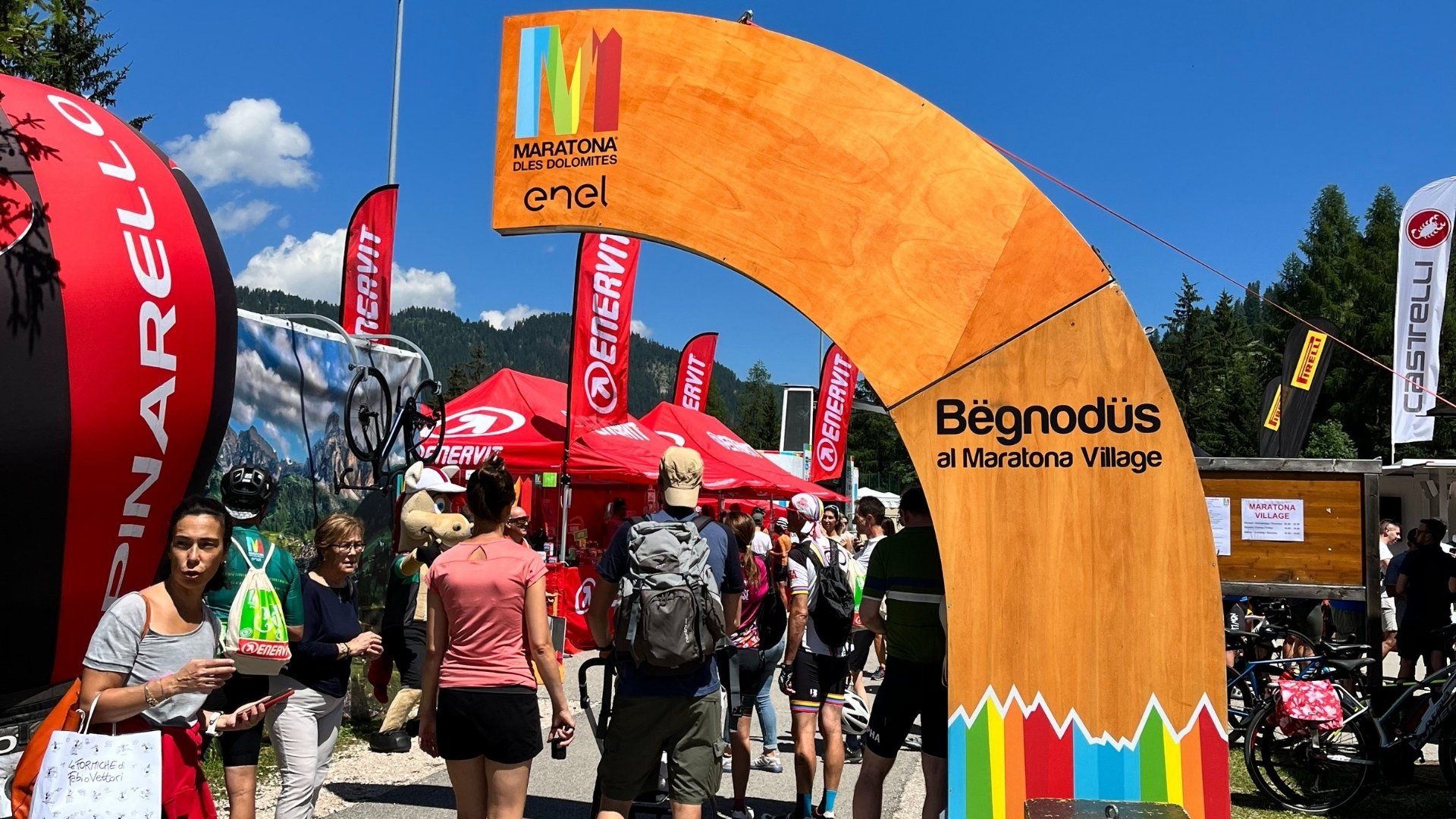
Training: How to Prepare for Glory
The Maratona isn’t your average Sunday spin, so your preparation needs to match the challenge. Here’s how to get ready:
Build Your Base
Start training at least six months out. Focus on long, steady rides to build endurance and a good base on which you will build on with higher-intensity efforts down the road. Aim for a solid weekly volume of 8-10+ hours on the bike. If you can, mix in some flatter rides to develop your aerobic capacity with what we call zone 2 intensity, which is generally considered conversation pace.
Add Intervals
While endurance is key, you should incorporate one day of high-intensity intervals per week during the base-building phase of training. Incorporate sessions like sweet spot intervals in the high zone 3 range to start, then progress to 4x8-minute threshold efforts, and then 3-minute VO2 max intervals over the course of your build phase. These intervals can be performed on a hill so you are training specific to the demands of the event. As you get about 6-8 weeks out from the Maratona, start getting more specific with your climbing efforts such as muscle tension intervals, which are low cadence, higher power output efforts, followed by a higher cadence recovery between intervals. These will boost your climbing power and help you tackle the steep sections with confidence. Additionally, you can add long rides in the 4-6 hour range once or twice a week where you add a series of intervals after you have burned 2000kj’s. These efforts after the fatigue of a long ride will help build durability, or the ability to sustain a higher power output late into the event.

Embrace the Climb
With gradients often exceeding 10%, climbing is the name of the game. The courses are full of spectacular climbs that fall in short succession, one after another. The climbs are all in the 8-11km (5-7 mile) length range so your training should be as specific as possible for that duration. Seek out local hills or, better yet, mountains to simulate the Dolomites. If you live in the flat lands, perform threshold intervals to get used to the hard efforts. If you have an indoor smart trainer, you can simulate long climbs on many different virtual training platforms. Before I did my first Maratona I used the virtual platform Rouvy and virtually rode the Sella Ronda route to familiarize myself with the climbs. Surprisingly, my “real life” time on this section of the Maratona was almost identical to my time riding it virtually. Practice sustained efforts of 20-60 minutes at a challenging yet manageable pace. You may also want to do some of these indoor rides with your front wheel up on a block to simulate your bike’s position when climbing if your trainer doesn’t raise up for inclines. This is important to the specificity of climbing as your muscles work differently when your body is on a bike going uphill. Don’t forget to work on your descending skills—you’ll want to enjoy those thrilling downhill stretches safely.
Seek Training Guidance
Having a plan in place to follow that is specific to the demands of the Maratona is motivating. If you’re interested in how all these training suggestions come together in a structured plan, check out our Maratona-specific 6-month training plan from the ground up, or the 7-week plan for the final push to get ready to ride in July. They are on our website at www.velocoachelite.com under the “Pre-built Training Plans” page. Make sure you use the discount code: MDD10 to receive 10% off the price of our Maratona-specific plans. Not only will these programs guide you every step of the way, but there is also email support that goes along with them so we’re here for you to answer any questions along the way.
Dial in Nutrition
Experiment with fueling on long rides. The Maratona’s aid stations are well-stocked with local treats, but you’ll still want to carry your preferred gels, bars, or snacks. You can also look at the sponsors of the Maratona on their website to find out which nutritional products they will have at the aid stations. You can then start using these products in your training to get used to them. Then you can grab what you need at the feed zone versus carrying a bunch of gels or bars. Aim to consume 60-90 grams of carbohydrates per hour during the race and remember it’s always wise to have more than you think you’ll need and finish with some gels or bars left over.
Mimic the Race
In the final weeks, try to replicate the Maratona’s demands. Plan a few rides with 3,000+ meters of climbing to get your body accustomed to the workload. An ex-pro cyclist friend of mine once told me “If you want to be a better climber, climb more.” This is great advice as an event like the Maratona requires race specificity, so climb, climb, climb!
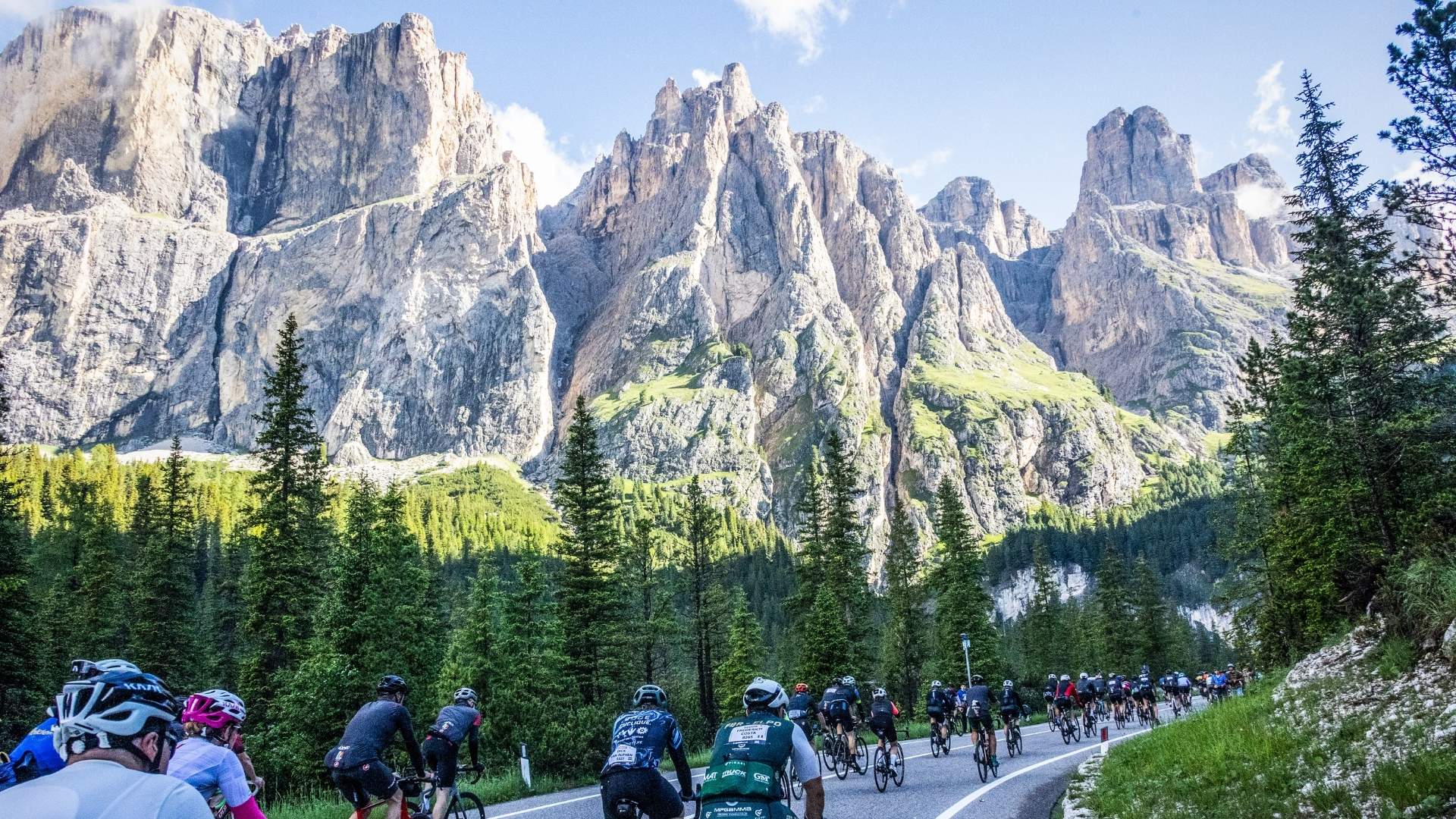
Tapering Before Race Day
Tapering for the Maratona involves reducing your training volume while maintaining intensity to allow your body to recover and peak for optimal performance. During the week leading up to the race, cut your total training volume by approximately 50%, but include a few short, high-intensity efforts to keep your legs sharp and maintain fitness. For example, do two to three shorter rides to keep the legs moving and include a few race-paced intervals on one ride early in the week, but avoid long or overly strenuous sessions. Take one or two full rest days, especially closer to race day, to ensure you’re well-rested. I prefer to take a rest day two days out from the event, then the day before the event do a 45-minute ride with four 90-second tempo efforts to simulate the intensity of the Maratona. Other very important aspects of recovery and preparation are to stay hydrated, eat well, and prioritize sleep to maximize recovery. Don’t worry if you don’t sleep well the night before the Maratona. Pre-race jitters can make it hard to sleep, but don’t sweat it, the research shows that sleep in the days leading up to the big event is more important than the night before. It won’t affect your performance.
Race Day: How to Thrive
You’ve trained, traveled, and arrived at the start line. Here’s how to make the most of race day:
Start Easy: Adrenaline is high but resist the temptation to go out too hard. There’s a lot of climbing ahead—pace yourself.
Hydrate and Fuel: Drink and eat consistently from the start. Don’t wait until you’re hungry or thirsty.
Enjoy the Views: The Dolomites are jaw-droppingly beautiful. Take a moment to soak in the scenery and snap a photo or two. Grab a photo with one of the many ex-pro riders on the course - Paolo Bettini, Miguel Indurain, and many others frequent the Maratona.
Tackle the Passes: The Pordoi, Sella, Gardena, and Giau—these iconic climbs are as tough as they are breathtaking. Break them into manageable chunks and celebrate every summit.
Smile: The crowd support is incredible. Kids high-fiving, cowbells ringing, and shouts of “Forza!” will carry you through the toughest moments.
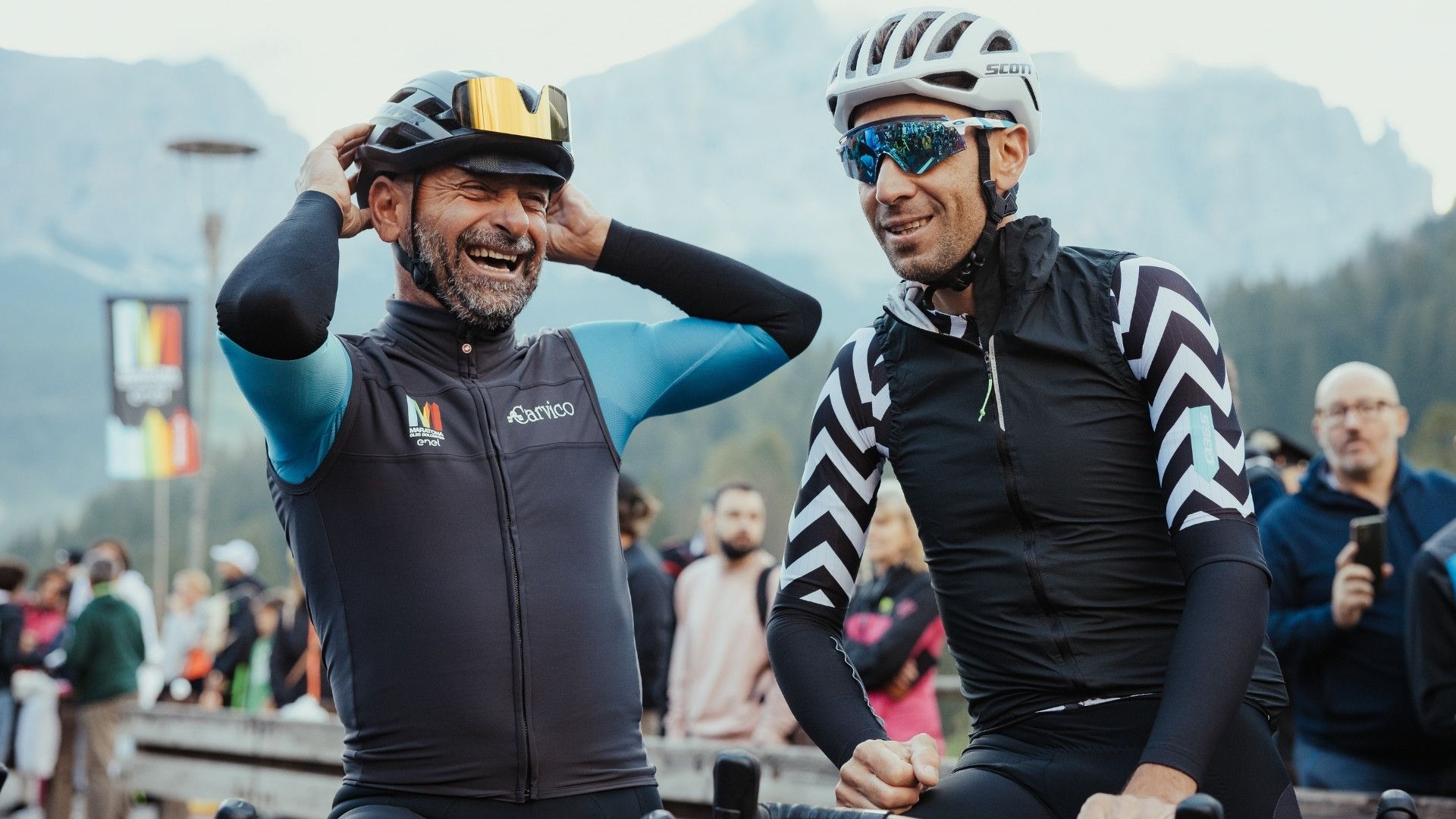
Post-Race: Celebrate in Style
You’ve crossed the finish line in Corvara—bravo! Now it’s time to reward yourself:
- Feast: Dive into Italian delights like pizza, pasta, and gelato. You’ve earned it.
- Relax: Soak your tired legs in a spa or thermal bath.
- Reflect: Swap stories with fellow riders and bask in the glory of your achievement.
Final Thoughts
The Maratona dles Dolomites is more than a race; it’s an adventure that pushes your limits and fills your soul. With the right preparation, a dash of determination, and an appreciation for the journey, you’ll not only survive but thrive. So clip in, start training, and get ready to make unforgettable memories in the heart of the Dolomites, arguably the most beautiful place on earth to ride a road bike. Ciao for now, and buona fortuna! I’ll see you at the start line!
Vint Schoenfeldt PT, CSCS, is the owner of Velocoach, a coaching service for improving every aspect of your riding. An accredited physiotherapist, Vint is also a Certified USA Cycling Coach and acted as USA Cycling Team Physiotherapist for the MTB Team at the World Championships. 2025 will be his third participation at the Maratona dles Dolomites.
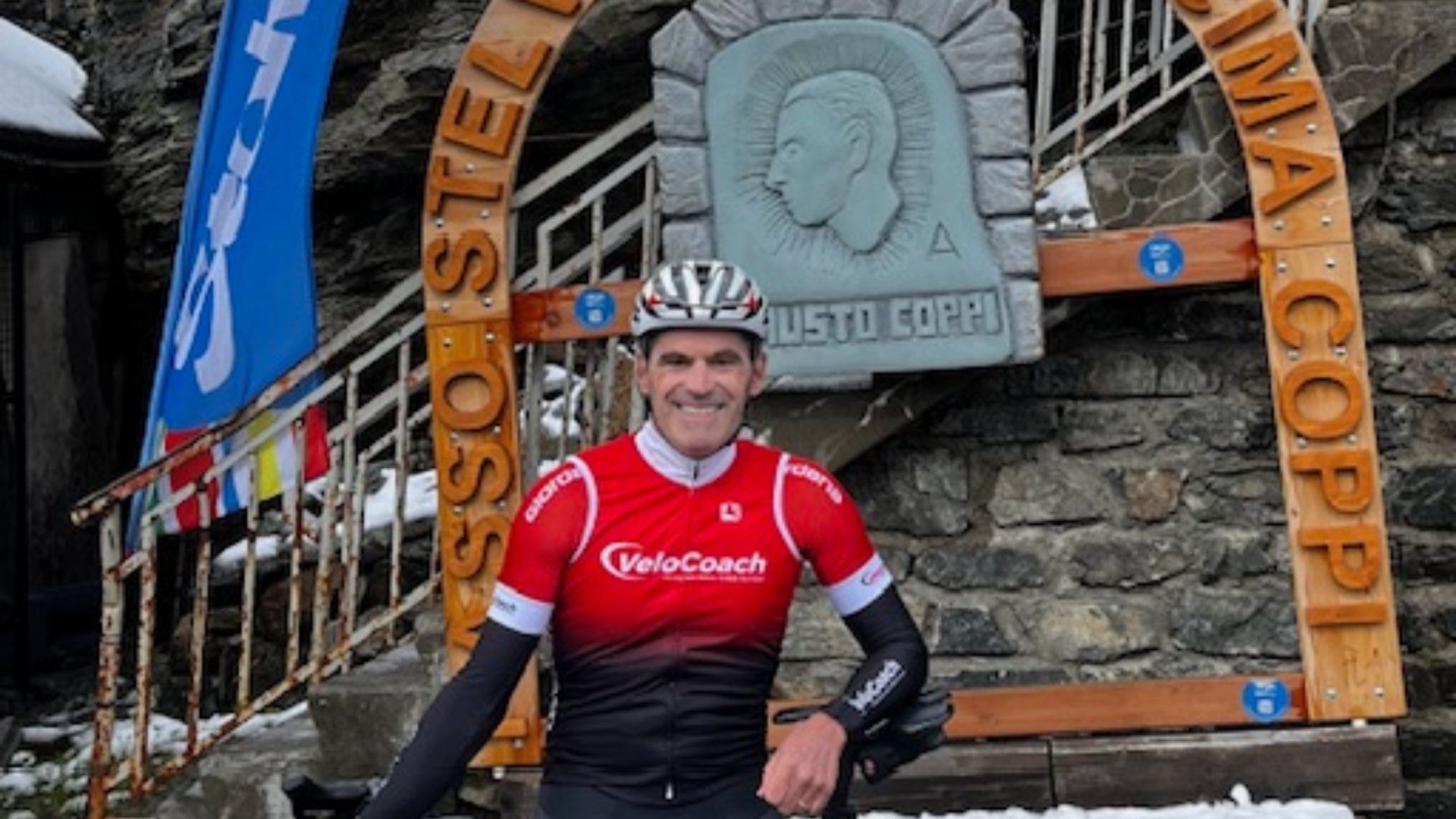

Comments ()